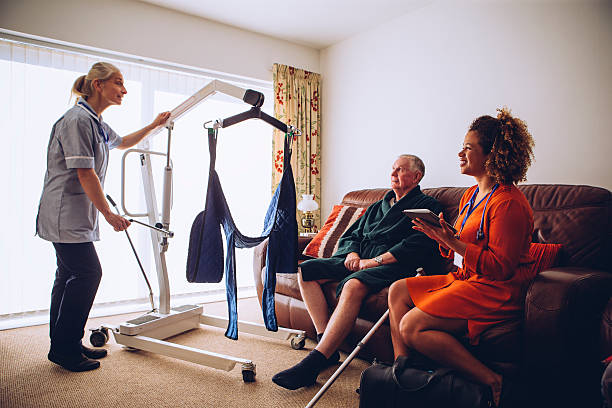Navigating through the world of patient lifts can feel daunting, especially when you’re tasked with ensuring comfort and safety for seniors with limited mobility. These essential tools, found in nursing homes, private residences, and hospitals alike, are all about making life a bit easier for everyone involved. They elegantly handle the transitions from chair to bed, sitting to standing, and vice versa, all while minimizing the risk of injury.
Lucky for you, we’ve compiled this comprehensive guide to help you navigate the buying process. Whether you’re looking to improve the comfort of your own home or are a dedicated caregiver on the hunt for the best equipment, you’ve come to the right place!
Contents
Crucial Considerations Before Investing in a Patient Lift
Before deciding on a particular patient lift, there are several key factors you need to take into consideration. These questions will guide you in making an informed and appropriate choice that best suits the needs of the individual and the caregiver. Whether you’re making a long-term investment or seeking a temporary solution, these pointers will assist you in making a wise, confident, and informed decision.
Choosing Between Manual and Electric Patient Lifts
When it comes to patient lifts, it’s truly a game of strength versus power. Manual lifts get their muscle from good old-fashioned human effort, typically harnessing the power of a hydraulic pump. Meanwhile, electric lifts are the high-tech cousins, zipping along thanks to a motor juiced up by a rechargeable battery.
Manual lifts might be lighter on the wallet as they skip out on fancy parts like batteries, motors, and electronic controls. But they do demand a bit more elbow grease than their electric brethren. Typically, you’ll find powered-up electric lifts in hospitals and similar spots, while manual lifts are a common choice for cozy home settings.
That said, there’s no hard and fast rule here. An electric lift can be just as at home in a domestic scene, especially if there’s only one caretaker. The beauty of these lifts lies in their one-hand wonder design, allowing the operator to steer the controls while the other hand ensures the patient is secure.
Assessing the Required Lift Height for Patient Safety and Comfort
It’s important to determine how high the patient needs to be lifted to ensure both their safety and comfort. This is dependent on various factors, such as the height of the bed, chair, or other surfaces the patient will be transferred to and from.
Additionally, consider the patient’s comfort and ease during these transitions. Remember, the ultimate goal is to minimize strain and risk of injury while maximizing patient comfort. This consideration should guide your decision when choosing the patient lift’s type and model.
Evaluating the Size of the Patient Lift for Optimal Space Utilization
When selecting a patient lift, determining the right size is vital to ensure that it fits appropriately within the allocated space. It’s essential to consider the dimensions of the room or area where the lift will be used. Make sure there is ample space for maneuvering the patient lift, particularly around furniture and other potential obstacles. Also, bear in mind that the lift size should be compatible with the patient’s weight and height for maximum safety and comfort.
Evaluating the Weight Capacity of the Patient Lift for Adequate Support

When choosing a patient lift, it is of paramount importance to consider the maximum weight it can support. This is dependent on the individual who will be using the lift. Ensure the lift you select has a weight capacity that comfortably and safely accommodates the patient’s weight. This guarantees the patient’s safety and comfort during transfers and prolongs the lift’s lifespan by preventing undue strain and potential damage.
Remember, overloading a patient lift is a safety hazard that could lead to unfortunate accidents and, therefore, must be avoided. This crucial factor should guide your decision-making process when selecting an appropriate patient lift.
Determining the Degree of Portability Required for Your Patient Lift
Portability is a crucial factor to consider when choosing a patient lift. Depending on your specific needs, you may require a portable lift that can be easily moved from room to room or one that can be disassembled for storage or transportation. This is particularly important for caregivers who travel frequently with their patients or have limited space in their homes.
If portability is essential, consider the weight and size of the lift, as well as its ease of assembly and disassembly. Some models come with detachable components or foldable frames for convenient storage and transportation. Additionally, check if there are any add-ons available that would make transporting the patient lift even easier.
Evaluating the Patient’s Stability: A Crucial Aspect to Consider
The stability of the patient is an essential factor to consider when selecting a lift. Some patients may have specific medical conditions or injuries that affect their balance and mobility, requiring a more stable and secure lift for transfers. In such cases, choosing a lift with additional support features like straps, harnesses, and slings may be necessary to ensure the patient’s safety during transfers.

